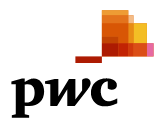-
What You Need to Know About SPACsThis bulletin provides a brief overview for investors of important concepts when considering investing in a SPAC, both (1) when the SPAC is in its shell company stage and (2) at the time of and following the initial business combination (i.e., when the SPAC acquires or merges with an operating company). It is important to understand how to evaluate an investment in a SPAC as it moves through these stages, including the financial interests and motivations of the SPAC sponsors and related persons.

-
SPACs: What You Need to KnowA guide for the curious and the perplexed. Special purpose acquisition companies, or SPACs, have been around in various forms for decades, but during the past two years they’ve taken off in the United States. In 2019, 59 were created, with $13 billion invested; in 2020, 247 were created, with $80 billion invested; and in the first quarter of 2021 alone, 295 were created, with $96 billion invested. In 2020, SPACs accounted for more than 50% of new publicly listed U.S. companies.

-
Special Purpose Acquisition Company (SPAC)A special purpose acquisition company (SPAC) is a company that has no commercial operations and is formed strictly to raise capital through an initial public offering (IPO) for the purpose of acquiring or merging with an existing company. Also known as "blank check companies," SPACs have been around for decades, but their popularity has soared in recent years. In 2020, 247 SPACs were created with $80 billion invested, and in just the first quarter of 2021, a record $96 billion1 was raised from 295 newly formed SPACs. By comparison, only two SPACs came to market in 2010.

-
How special purpose acquisition companies (SPACs) workSpecial purpose acquisition companies (SPACs) have become a preferred way for many experienced management teams and sponsors to take companies public. A SPAC raises capital through an initial public offering (IPO) for the purpose of acquiring an existing operating company. Subsequently, an operating company can merge with (or be acquired by) the publicly traded SPAC and become a listed company in lieu of executing its own IPO.
